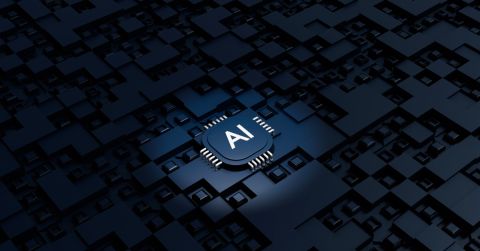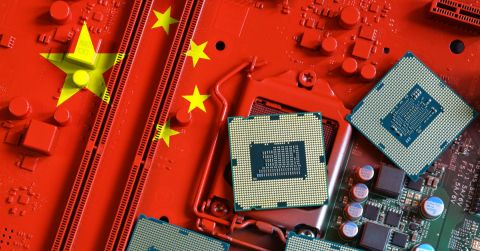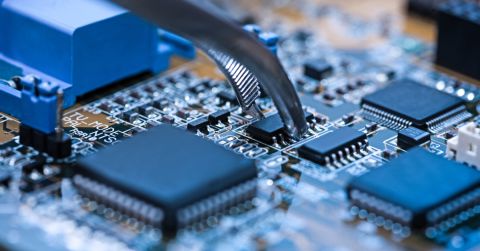7 Emerging Sensor Technologies Driving the Future of Electronics
The world of engineering is rapidly evolving and advancing, thanks in part to the development of innovative sensors that allow for more precise measurements and data collection. Over the next few years, the sensor market will experience significant growth and new innovative sensors are expected to play a crucial role in the electronics industry, enabling new applications and services that were previously not possible.
In this blog post, we will explore seven cutting-edge sensor technologies that will be shaping the future for electronics engineers. We'll look at new sensor features, capabilities and potential applications in various industries. By understanding these technologies better, engineers can stay ahead of the curve, and make use of them to create even more powerful solutions for tomorrow's challenges. So, let’s dive into what these amazing sensors have to offer.
1. IoT-Enabled Sensors: Demand Continues to Soar
The Internet of Things (IoT) is fueling the development of new and innovative sensor technologies, as the demand for smart home, smart office and other connected devices continues to soar. Sensors play a critical role in the IoT, collecting and analyzing data from a wide range of sources to improve efficiency, increase safety and provide new insights into how devices and systems are used. For example, in transportation, sensors are used to monitor the performance of vehicles, track fuel consumption and provide real-time traffic updates to improve safety and efficiency on the road.
The IoT is also providing new insights into how devices and systems are used. By analyzing data collected from sensors, manufacturers can gain a better understanding of how their products are being used in the real world. For example, sensors can be used to track how people interact with smart home devices, providing valuable information about how these devices can be improved.
2. Smart Sensors: Powering Bold New Applications
Smart sensors are another key trend shaping the future of the electronics industry. These sensors can process and analyze data locally, reducing latency, increasing efficiency and enabling real-time decision making. This is particularly important in applications where real- time data is essential, such as autonomous vehicles, where decisions must be made quickly and accurately to ensure safety.
Smart sensors are used to monitor the temperature, humidity and air quality in homes, offices, and industrial settings, helping to regulate indoor environments and improve energy efficiency. By filtering out irrelevant or false data before it is transmitted, smart sensors can also be used to improve the accuracy of data collection across use cases. For example, in industrial settings, smart sensors can be used to monitor the performance of machinery, and to detect and report malfunctions before they cause serious damage.
3. Wearable Sensors: Enabling Healthier Lives
Wearable sensors are becoming increasingly popular as more people seek to track their health and fitness. These sensors can track metrics such as heart rate, sleep patterns, physical activity and body temperature. They provide valuable insights into how people live that are being used to improve personal health and wellness.
Wearable sensors can also be used in remote healthcare, where they can be used to monitor the health of patients, track the progression of diseases and provide real-time alerts to healthcare providers. For example, wearable sensors can be used to monitor the vital signs of patients with chronic conditions, such as heart disease or diabetes, making real-time data available to healthcare providers who can take action to prevent serious complications.
4. AI-Enabled Sensors: Unleashing New Opportunities
Artificial intelligence (AI) is transformational technology that’s in the spotlight today, to say the least (we don’t need to get into ChatGPT here, you no doubt have been hearing about it). New AI-infused systems are also changing how sensors are used, enabling the analysis and interpretation of sensor data in real-time to make predictions and decisions regarding future events. This isn’t just ’15-minutes of fame’ for AI, but the start of AI transforming and disrupting many markets. This opens up promising new opportunities in the fields of medicine, agriculture, industrial control systems and much more.
5. Biometric Sensors: Enhancing Security and Authentication
The rise of biometric sensors in recent years has been driven by the increasing demand for more secure authentication methods for devices and transactions. Biometric sensors measure various biometric parameters, such as fingerprints, iris patterns and facial features, providing a very secure way to authenticate and authorize access to sensitive data and transactions.
As more and more people seek to secure their devices and transactions using biometrics, the use of biometric authentication will become the norm in many industries – from finance to healthcare – and this trend is expected to continue for some time.
6. Augmented Reality Sensors: Enriching the User Experience
Augmented Reality (AR) is becoming an increasingly popular technology. AR sensors add digital information to the real world, enhancing a user’s experience by displaying supplemental contextual information overlayed onto the physical environment. This trend is expected to continue as AR becomes increasingly integrated into a wide range of industries, from retail to gaming. As AR technology improves and becomes more accessible, AR sensors will play an increasingly important role in shaping the future.
-
Discover the Best Sensor Hub MCU Options with High ADC Channel Count
-
See the top searched and viewed PDP for an IMU related to VR devices
7. 5G-Enabled Sensors: Improving Data Transmission
With 5G’s new levels of low latency and high bandwidth, the rollout of 5G networks is expected to have a significant impact on the future of sensors. 5G networks will allow sensors to transmit and receive data more quickly and efficiently, which will open up new opportunities in fields such as autonomous vehicles and smart cities, where real-time data transmission is essential.
Transforming Engineering with Sensors: New Possibilities Await
Many different types of advanced sensor technologies — some established, some still emerging — are driving innovation today, and all can transform how we engineer our day-to-day lives.
From IoT and smart sensor technology powering industry automation, wearable biometric devices tracking vital signs, AI-infused algorithms detecting patterns that would otherwise go unnoticed, augmented reality enhancing our perception, right down through 5G connectivity linking remote locations — these advances promise exciting new possibilities for engineers everywhere. Stay tuned!









